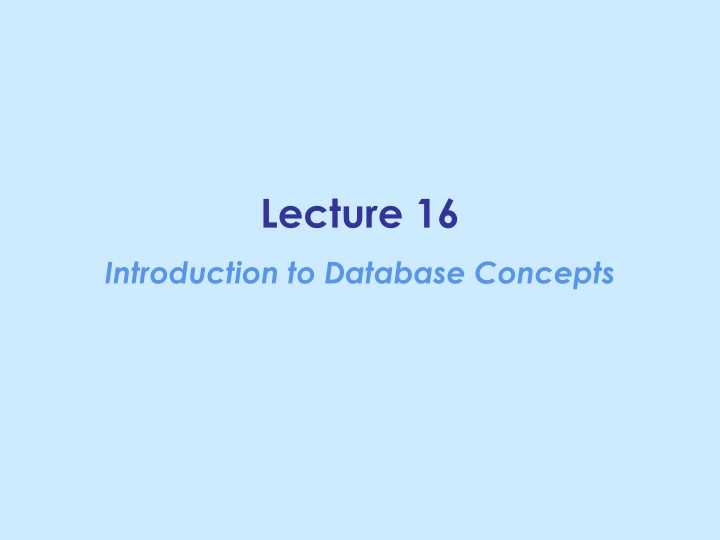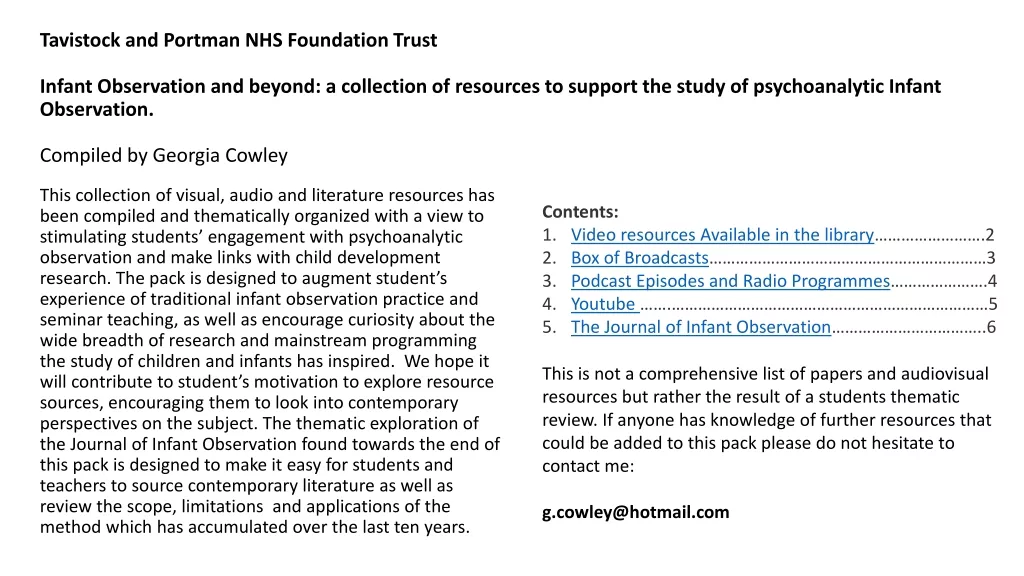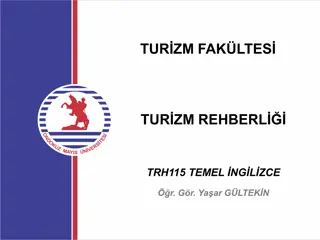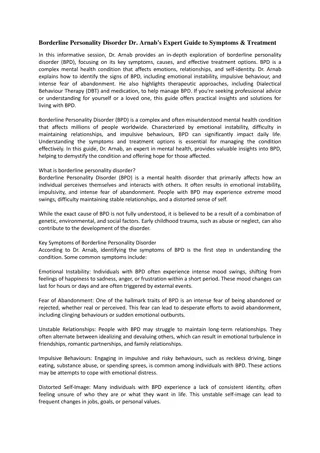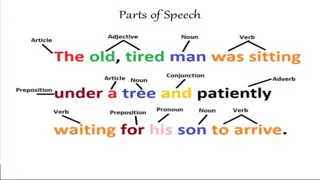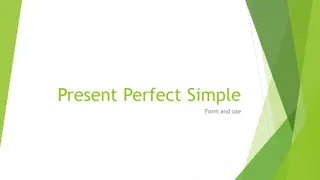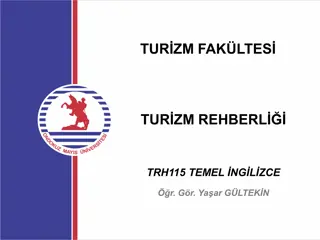Psychoanalytic Borderline Group of Neuroses: Past and Present Insights
Historical and contemporary perspectives on borderline personality disorders through seminal works by influential authors like Stern, Kernberg, Masterson, and more. Delve into the complexities of borderline states, pathological narcissism, and psychotherapeutic strategies. Gain valuable insights into the treatment of borderline patients and the evolution of clinical approaches over the years. This comprehensive collection of literature provides a deep understanding of the dynamics and challenges in working with individuals with borderline personality disorders.
Uploaded on Feb 24, 2025 | 0 Views
Download Presentation

Please find below an Image/Link to download the presentation.
The content on the website is provided AS IS for your information and personal use only. It may not be sold, licensed, or shared on other websites without obtaining consent from the author.If you encounter any issues during the download, it is possible that the publisher has removed the file from their server.
You are allowed to download the files provided on this website for personal or commercial use, subject to the condition that they are used lawfully. All files are the property of their respective owners.
The content on the website is provided AS IS for your information and personal use only. It may not be sold, licensed, or shared on other websites without obtaining consent from the author.
E N D
Presentation Transcript
Lecture 16 Introduction to Database Concepts
Differences Between Tables and Databases Database: table of info iTunes Automobile registrations Demography tables
Canadas Demographic Information
The Databases Advantage Metadata advantage Search by country Compute world population
The Databases Advantage Tags for database fulfill two roles Identify type of data <country>, <population> Define affinity of data <demogData>
XML: A Language for Metadata Tags XML: Extensible Markup Language User creates tags
XML: A Language for Metadata Tags Matching tags Use on Web Written in plain text editor
XML Similar to HTML No spaces Case sensitive Whitespace b/w tags
XML Example Scenario Create a database for Windward Islands archipelago in South Pacific Develop tags <archipelago> <island> <iName> Tahiti </iName> <area>1048</area> </island> Affinity role </archipelago>
XML <?xml version = "1.0" encoding="UTF-8" ?> Recommended declaration (beginning of file) Version Encoding
Expanding the Use of XML Adding another archipelago Same file Same structure Additional tag: <a_name>
Expanding the Use of XML Root element of XML database Encloses all content <archipelago> in previous example
New root element
Attributes in XML Attributes (like HTML) Use for additional metadata, not for actual content Quotes (single or double) <book id= bk109 ><title>Divergent</title>
Effective Design with XML Tags Identification Rule Label Data with Tags Consistently (E.g. from previous XML?) Affinity Rule Group Related Data (E.g.?) Collection Rule Group Related Instances (E.g.?)
Effective Design with XML Tags Difference b/w Collection Rule and Affinity Rule Both for grouping Single instance or collection?
Other XML Examples Note CD catalog Breakfast menu http://www.w3schools.com/xml/xml_exam ples.asp
Relational Databases Relational databases (RDBs) Relationships among different kinds of data (e.g., Student, Course) Description with XML Answering queries
Entities Entity Anything that can be identified by a fixed # of attributes Attributes Names and values
Entities Entity defines a table (Island) Name of entity is name of table Column represents attribute Values in column are attribute values Row Entity instance (often just entity)
Island Example Island entity as table
Island Example Island entity as XML <island> <name>Isabela</name> <area>4588</area> <elevation>1707</elevation> </island> <island> <name>Fernandina</name>
Entities Attributes have data types Number, date, image, etc. <area type= number >14</area> Ensures proper format
Properties of Entities Table can be empty Order rows/columns irrelevant Each row represents different entity No two rows can be same
Keys Attributes distinguish rows Single attribute Multiple attributes Candidate key Attribute(s) which uniquely defines entity
Keys Primary key Candidate key used by database Keys must distinguish among potential entities Unique IDs can be assigned E.g., M#
Keys North American Political Units Candidate keys? Country US CA MX Name Alaska Alberta Capital Juneau Edmonton Calgary Largest City Anchorage Zacatecas Zacatecas Zacatecas
Atomic Data Atomic Data Values stored for attributes Not separable Separate fields for street, city, state, etc. Exceptions Dates, time, and currency E.g., 01/01/1970 (with format dd/mm/yyyy)
Database Schemes How to define a table? Tags Schema Table name Attributes and data types Primary key
Database Tables Recap Entities: rows; Columns (fields): attributes Rows and columns unordered Tables and fields should have mnemonic names Fields must be atomic One or more attributes define the primary key
Operations on Tables Relational database: collection of tables Key operation of database: search User queries db, s/w searches
Operations on Tables Operations on tables produce tables (which may be empty) Operations Select Project Union Difference Product Join
Select Operation Select Takes rows from one table to create new table Select Test From Table Test applied to each row
Select Operation Test is short formula Test uses attribute names constants relational operators <, , , =,
Select Query Select Interest= Beach From Nations Select Lat > 40 AND N_S = N From Nations
Project Operation Project Builds a new table from the columns of an existing table Project Field_List From Table
Project Query Project Name, Domain, Interest From Nations
Union Operation Union Combine two tables with same attributes Table1 + Table2
Union Query At45OrBelow = (Select Latitude >= 45 AND N_S = S From Nations) ExtremeGovt = At60OrAbove + At45OrBelow
Difference Operation Difference Operation Remove common rows in two tables Same fields Table1 Table2 E.g., Nations At60OrAbove
Product Operation Product Multiplying tables together Creates super table Table1 Table2 Each row of Table2 is appended to each row of Table1
Super = Nations Travelers Results in New table with ten fields
Product Operation Merges info that may not belong together Super table usu. trimmed down
Product Example, Trimmed Super = Nations x Travelers Assign = (SelectN_S= S AND E_W= W AND Friend= Isabella From Super) + (SelectN_S= S AND E_W= E AND Friend= Brian From Super) + (SelectN_S= N AND E_W= E AND Friend= Wen From Super) + (SelectN_S= N AND E_W= W AND Friend= Clare From Super) Master = Project Name,Friend From Assign 14-50
